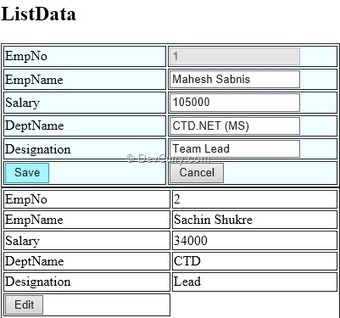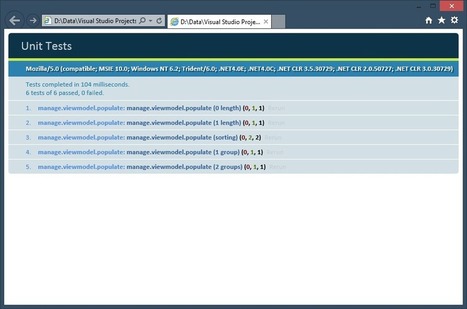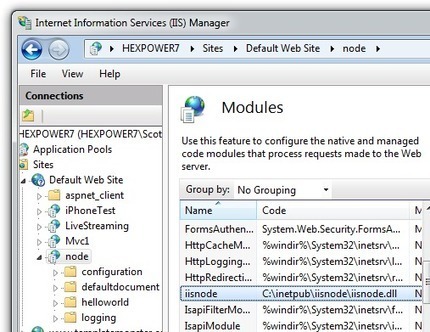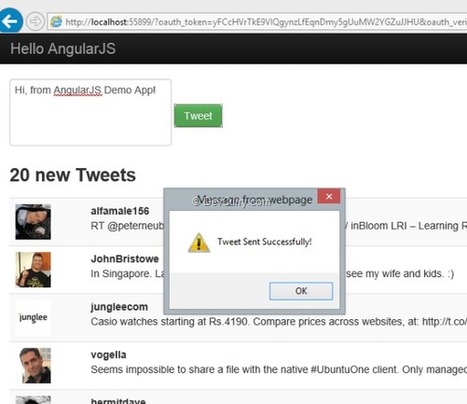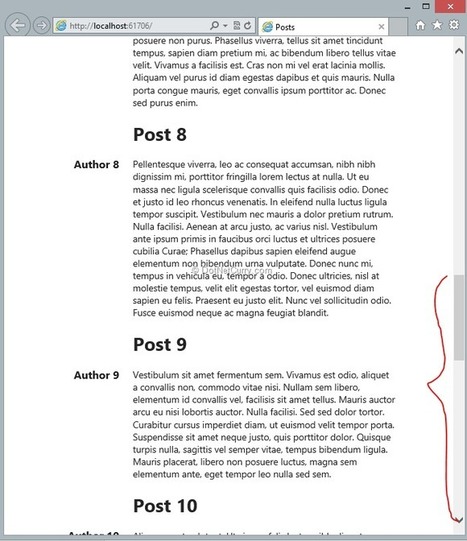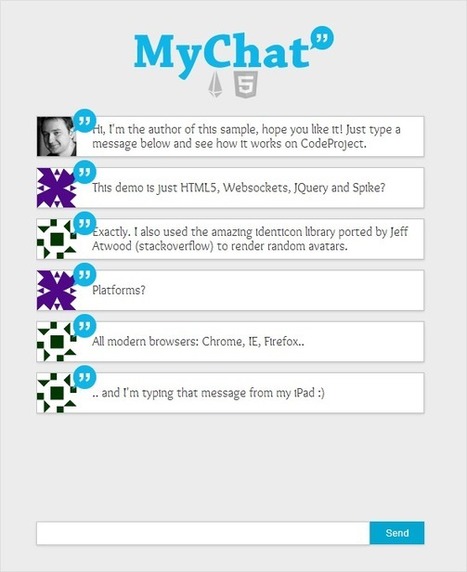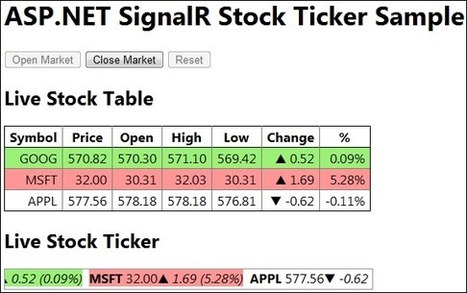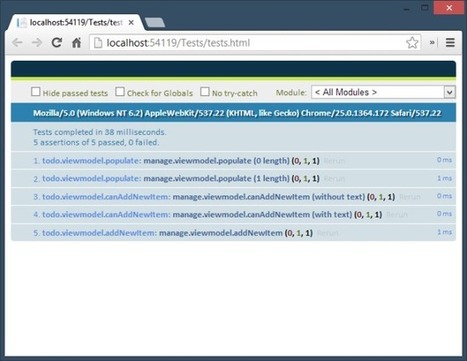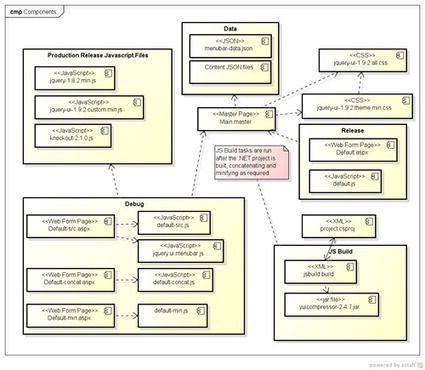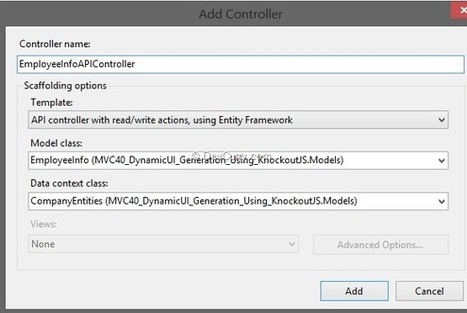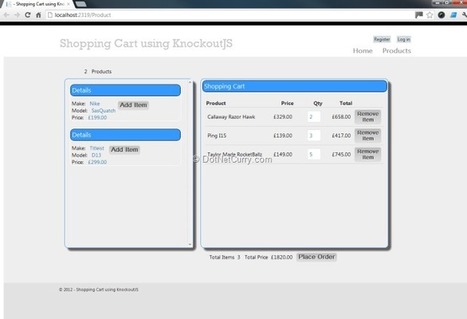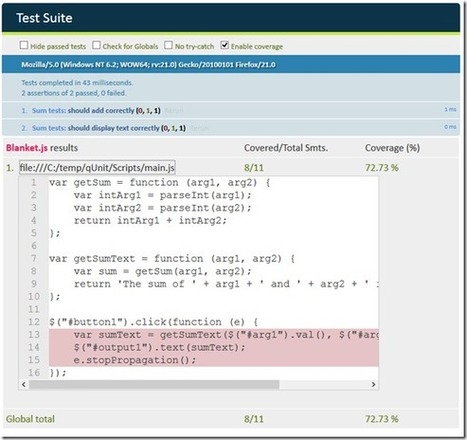This article will describe how to implement jQuery Autocomplete with ASP.NET WebAPI. jQuery Autcomplete is party of the jQuery UI library of widgets and it allows one to easily transform a textbox into an autocomplete textbox by providing a data source for the autocomplete values.
Get Started for FREE
Sign up with Facebook Sign up with X
I don't have a Facebook or a X account



 Your new post is loading... Your new post is loading...
 Your new post is loading... Your new post is loading...
Current selected tag: 'asp.net'. Clear
No comment yet.
Sign up to comment
A common question is how to create an editable list of data allowing users to Edit and Save existing data. The default MVC scaffolding in Visual Studio provides us with a way to implement this where Create/Edit/Delete are implemented on the server side and each action has a separate UI. Today we will see how we can implement it using jQuery and a lightweight client side library knockout.js (also referred to as KO). While unit testing our ViewModel was all working great, the real icing on the cake is getting JavaScript unit testing working without a browser, integrated into Visual Studio. And it would be even better if the test runs and results could be integrated into the Visual Studio Test Explorer. That’s where two separate Visual Studio extensions come in to play: the Chutzpah JavaScript Test Runner and the Chutzpah Test Adapter for Visual Studio. Both can be installed directly from the Extensions and Updates window in Visual Studio. Today we’ll see how to use a feature called Directives in Angular JS. Directives allow you to encapsulate custom behavior in an HTML element, attribute, classes and even comments. For example, the ng-app attribute that we use to define the scope of our Angular App is in fact a Directive, because there are no HTML5 attributes by that name! It’s Angular who interprets the attribute at runtime. Apart from helping add custom attributes, directives can also be used to create the server side equivalent of ‘tag-libraries’ on the client. Those familiar with WebForms or JSP development will remember you could create server side components with custom Tags like <asp:GridView>…</asp:GridView> where the GridView rendering logic was encapsulated in a server component. Well, Directives allow you build such components, but on the client. Some folks on our team have been working on making node.js work awesomely on Windows. There's a few questions you might have. Tomasz Janczuk is working on the iisnode project lately. You might think that Windows and node don't belong together. "That's just wrong! What are they thinking? I thought IIS was all about .NET?" Well, you may recall I spoke at CodeMash a few years back on IIS7 and PHP and did a screencast showing how IIS7, PHP and FastCGI could push many thousands of requests a second. The IIS folks, the Windows folks, the Azure folks, want to make sure everything runs well on Windows. Remember, we sell Windows, so it's good if it does many things well. ;) It is still in very early stage and in terms of features it draws uml sequence diagram from your input and you can share the document with multiple users who can participate in collaborative editing. Behind the scene TextUml is developed with Backbone.js in CoffeeScript, it uses Require.js for modularization, KineticJS for html5 canvas drawing, Mocha, Chai and Sinon for client side testing. The server side uses all the latest beta of ASP.NET MVC, ASP.NET WebAPI and Signalr. ASP.NET MVC has a really nice capability of generating client-side validation code based on the data annotations on your model. It can either generate a JavaScript code with the rules or generate data attributes on the input elements (unobtrusive). By using the second approach jQuery can read these data attributes (by the unobtrusive validation plugin) and automatically wire the validation logic up on the client. See how to use a $resource service in AngularJS to post data to an ASP.NET MVC Controller.
So to post data, we need to simply call the save function on our resource instance. However there is a slight gotcha. The $resource object expects all the functions to post to the same URL. In ASP.NET MVC terms, this means posting to the same action method with different HttpGet/HttpPost/HttpPut etc attributes. An increasingly popular trend lately is to have the client handle rendering of your content. So, long server side rendering has been replaced with some fancy JavaScript libraries. Ember.js is a powerful JavaScript MVC framework to create complex web applications that eliminates boilerplate and provides a standard application architecture, it supports UI Bindings, Composed Views, Web Presentation Layers, and plays nicely with others. In order to create a real-time interaction web application, I add a SignalR hub and REST service with ASP.NET MVC. The infinite scroll pattern is simply a different kind of pagination. In this article, we will see how to implement an infinite scroll using ASP.NET WebAPI, KnockoutJS and jQuery he most common requirement for a line of business application is to represent data in pages. Usually this involves showing data in a grid and showing a navigate pane with either page numbers or Next/Previous button (or both) to navigate to multiple pages. This works fine in most cases. To me these two libraries seem like a match made in heaven. SignalR calling a JavaScript function to alter data, and Knockout automatically updating the UI, awesome! In this post I’ll show how you can use KnockoutJS and SignalR together to create real-time web application with little effort. I’m going to create a very basic example of a web page showing a list of exchange rates hooked up using KnockoutJS. I’ll then create a server side page to update the data and use SignalR to call a JavaScript function to update the JavaScript model. |
MyChat: a simple real-time client-server chat using fancy HTML5 features and identicons. Everything in the web becomes increasingly real-time and HTML5 finally offers some facilities to build efficient, simple and robust real-time applications on the web. This article serves as a demonstration of such facilities in building a fun and simple client-server chat:
First of all, we need to define a communication protocol between. This represents the messages which are exchanged between the client and the server. Spike-Engine simplifies the networking implementation and allows expressing this protocol declaratively via an XML file. This part is quite straightforward, check the user guide on their website for more info. In last post, we implemented SignalR part of the stock ticker sample using Angular JS and modified the HTML page to use Angular’s directives. As promised earlier, we will finish the implementation in this post by incorporating UI changes using directives and filters.
From
tech
So as you know I have been very interested in AngularJs lately and have been absorbing as much knowledge as I can on the subject. The application we are developing at work is getting close to beta so we began to look into bundling and minification of our JavaScript. So, for the past couple of months I’ve been investigating a variety of topics from top-to-bottom, including HTML5 and CSS3, Bootstrap, ASP.NET MVC, Entity Framework (including Repository, Unit of Work, and Service patterns), Dependency Injection, JavaScript (including the Module and Revealing Module patterns) and jQuery, KnockoutJS, and finally QUnit. One topic I thought I’d blog about is how to unit test client-side JavaScript code, specifically ViewModels used by KnockoutJS that communicate with a Web API endpoint. To help illustrate these techniques I’ve created an ultra-simple ASP.NET MVC application that uses both Web API and KnockoutJS. Shockingly, it’s a to-do application. I’ve been working with ASP and ASP.NET for about ten years now, starting with ASP classic and settling on .NET 2.0 as my favorite. My new year resolution this year (2013) was to upgrade my .NET work to .NET 4.0 using Visual Studio 2012 Express and really get to grips with MSBuild, so that I can concatenate and minify my JavaScript files as part of the normal build process of a .NET project, in Visual Studio. I wanted a non-trivial project to demonstrate this process, because I find the devil is in the details. I have often faithfully followed an overly-simple tutorial or introduction to an unfamiliar subject, then discovered that the tutorial did not prepare me for when you want to do something even slightly difficult. So, in this tutorial we’ll be attempting to marry Knockout.js and jQuery UI. We will also be using a JSON file with a hierarchy of data to define a menu. As the title suggests, this is a very basic website that implements global chat, meaning that the users can chat globally with each other by just registering their name. The code uses asp.net web services along with a little jQuery and AngularJS. The idea that I had in mind before creating this was to utilize the capability of AngularJS to automatically update the DOM whenever its models are updated. The source of this idea is a Google presentation that I saw some time back about AngularJS and Firebase(Video). I thought that maybe we can implement something like this at a very small scale using the Application State of ASP.NET. implementing real time notifications similar to twitter, stackoverflow..etc using Knockout JS and SignalR. In this post, we will implement real time notification when any new post or comment is added and display it on notification click using Knockout JS and SignalR. You might think .. Why notification? Why not to display in real time? If we display it in real time, It will irritate users. Suppose you are reading a post middle of the page, suddenly few new posts appear on top then the post you are reading go down and you have to scroll down to find where it is. That’s why in twitter or Stackoverflow,the notification is used when any new post is arrived and you can check them on notification click. We will implement the same thing for both posts and comments. Durandal stitches together Knockout, Sammy, and RequireJS to make it easier to use these technologies together. In this blog entry, I want to provide a brief walkthrough of using Durandal to create a simple Single Page App. I am going to demonstrate how you can create a simple Movies App which contains (virtual) pages for viewing a list of movies, adding new movies, and viewing movie details. The goal of this blog entry is to give you a sense of what it is like to build apps with Durandal. One of the most awesome features in KO is ‘template’ binding. This is a simple mechanism for building UI structures with repeating UI blocks. Templates support data binding expressions to bind various HTML attributes (text, value, id, url etc.) to the data in the view model. Gregor Suttie introduces KnockoutJS, a JavaScript library that bring tons of richness to your ASP.NET MVC web application with features like ‘Declarative Bindings’, ‘Dependency Tracking’, ‘Templating’ There is a need for a simple unit test project that is devoted to JavaScript unit testing. For this template, I chose the jQuery QUnit project. To make full use of the template, you will also need the Chutzpah JavaScript Unit Test Runner installed. Chutzpah integrates your JavaScript Unit tests. I recently started using QUnit for unit testing JS code and I’m really impressed with it. I’m sure Jasmine framework is equally good, but I picked up QUnit because none of the languages/frameworks I have learned so far have the letter ‘Q’ in them!! So I have a simple page which is used to add two numbers and show the sum as a text. |


